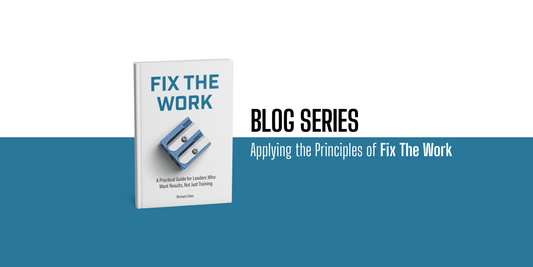Agile Without Action: When Learning Teams Pretend to Iterate
Richard SitesShare This Post
Many learning teams do not resist change. In fact, most of them want it. They want to move faster. They want to deliver better. They want to stop spinning in cycles of endless revisions and overbuilt content. So when the idea of agile design shows up, it is usually met with agreement. Everyone nods. Everyone talks about iteration and prototyping and quick feedback. For a moment, it feels like the team is heading in a new direction.
But that momentum rarely lasts. Somewhere between the kickoff and the next review cycle, things start to slow down. The prototype that was supposed to be fast and rough turns into something polished and rehearsed. It becomes something no one wants to show until it has been cleaned up, reviewed, and approved. In other words, the team ends up building the same way they always have, only now they are calling it agile.
This is what creates the illusion of iteration. It looks like progress from the outside. There are frequent check-ins. There are multiple drafts. There is conversation about feedback and testing. But under the surface, not much has changed. The process is still centered on stakeholder preferences. The product is still shaped by internal review cycles. And the actual user—the person who needs the thing—is still on the outside.
Most teams are not trying to fake it. They are trying to do what they think agile design requires. But when the product never reaches the people it is meant to help, when feedback is based on opinion instead of use, and when shipping is always delayed until it feels safer, then the work is not iterative. It is performative.
This kind of pretend iteration wears people down. The team stays busy, but nothing meaningful gets out the door. Decisions are avoided. Final versions are postponed. And the group spends more time polishing a prototype than testing whether it works. After a while, it becomes hard to tell whether the team is improving anything or just repeating the same effort with different language.
There are real reasons this happens. One is the fear of being wrong. Teams want to stay flexible. They want to remain open to input. They want to avoid the consequences of a product that does not land well. So they wait. They make small adjustments. They ask for more feedback. And they convince themselves that more refinement is more responsible.
Another reason is the structure of the organization itself. Even if the team wants to move quickly, they often face checkpoints, review requirements, and approval layers that slow everything down. Every draft needs to be seen. Every piece of feedback has to be addressed. Every minor decision invites a round of discussion. What started as an agile mindset becomes stuck inside the same rigid system.
There is also a more subtle cause, and it has to do with who the team is designing for. In many projects, the user is not the priority. The work is not shaped around how it will be used. It is shaped around how it will be received. The goal becomes to satisfy the person who requested the training, not the person who will rely on it. That shift, from serving the user to pleasing the sponsor, changes everything. Instead of solving a real problem, the team starts building to match a preference. And when that happens, iteration becomes irrelevant.
Real iteration works differently. It does not require multiple versions. It does not start with a perfect plan. And it does not depend on everyone liking the first draft. It begins by building something usable and putting it in front of someone who needs it. The team watches how it performs in context. Then they decide what to change based on what actually happened.
This kind of action is what makes agile design meaningful. Without it, iteration is just delay disguised as progress. And the cost of that delay is more than time. It creates confusion. It burns energy. It undermines trust in the team’s ability to deliver.
For teams who feel stuck in motion but never reach the finish line, the answer is not another round of feedback. It is not another prototype. It is choosing to release something and learn from how it works. It is making progress more important than polish. It is recognizing that useful outcomes do not come from more talk. They come from action.





